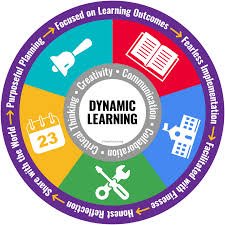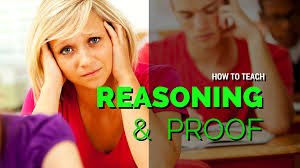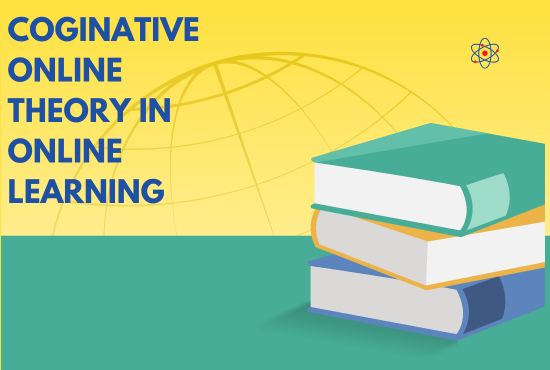How to Foster Critical Thinking in Students: A Guide for Educators and Parents
Updated: 04 Jul 2025
Learn effective strategies for fostering critical thinking in students. This guide for educators and parents explores techniques to encourage curiosity, problem-solving, and independent thought, helping students develop essential skills for academic and life success.
The most effective method to Cultivate Decisive Reasoning in Understudies: An Aide for Teachers and Parents
Decisive reasoning is a primary expertise for understudies, engaging them to investigate, assess, and make thoughts with a more profound comprehension. In an undeniably perplexing world, it is fundamental for youthful students to foster the capacity to think basically, settle on informed choices, and tackle issues imaginatively. Whether you’re a teacher in the study hall or a parent directing your youngster at home, cultivating decisive reasoning in understudies is a cooperative and progressing process. This guide offers noteworthy procedures for the two instructors and guardians to sustain this imperative expertise
1. Encourage Interest and Questioning
The initial step to cultivating decisive reasoning is to urge understudies to clarify some things. Interest is the seed from which decisive reasoning develops. Rather than just giving responses, instructors and guardians can establish a climate where addressing is esteemed and seen as a pathway to more profound comprehension.

Instructions to carry out this:
- Ask unconditional questions: Rather than posing inquiries that have a solitary right response, offer conversation starters that require smart reflection. For instance, inquire “What might occur if… ?” or “For what reason do you imagine that is?”
- Model questioning: Instructors and guardians can show the most common way of addressing by verbally processing and examining their perspective. This assists understudies with figuring out how to move toward complex issues with interest.
2. Promote Dynamic Learning
Dynamic learning is a technique where understudies are straightforwardly engaged with the growing experience as opposed to latently getting data. This approach urges understudies to draw in, examine, and assess content, cultivating a more profound comprehension of the material.

Step by step instructions to execute this:
- Use critical thinking activities: Challenge understudies with certifiable issues or contextual analyses that expect them to explore, speculate, and test their answers.
- Cooperative learning: Gathering conversations and distributed educating permit understudies to share assorted viewpoints and refine their own reasoning.
- Intuitive projects: Involved exercises, for example, discusses, pretending, and examinations, permit understudies to think basically while drawing in with the material.
3. Develop Logical and Intelligent Skills
Decisive reasoning includes thinking of thoughts as well as breaking down and assessing them. Understudies need chances to think about their thinking and figure out how to survey their decisions.

Instructions to execute this:
- Reflection time: In the wake of finishing a task or action, request that understudies think about what worked, what didn’t, and what they could move along. This creates mindfulness and metacognition.
- Investigate different viewpoints: Urge understudies to think about different viewpoints on an issue, looking into contentions prior to reaching inferences.
- Make assessment rubrics: While introducing a task, task, or idea, give understudies models for assessing their work. This shows them how to basically evaluate thoughts and arrangements.
4. Cultivate a Development Mindset
A development mentality — the conviction that capacities and insight can be created — upholds decisive reasoning by empowering understudies to embrace difficulties, gain from errors, and view misfortunes as learning potential open doors. At the point when understudies won’t hesitate to fall flat, they are bound to move toward issues with imaginative arrangements.

The most effective method to execute this:

- Acclaim exertion, not simply outcomes: Recognize the method involved with deliberate reflection, in addition to the end-product. Acclaim understudies for their critical thinking and steadiness.
- Standardize mistakes: Urge understudies to see blunders as a component of the educational experience as opposed to disappointments. Make an environment where understudies can try different things with various arrangements unafraid of judgment.
5. Incorporate Assorted Perspectives
Openness to different points of view widens understudies’ reasoning and assists them with valuing that there are numerous ways of moving toward an issue or figure out an issue. Decisive reasoning is upgraded when understudies are urged to check out at a subject from different points.

The most effective method to carry out this:
- Open understudies to various viewpoints: While showing an idea, present alternate points of view or wellsprings of data. Welcome understudies to consider assorted social, verifiable, and social settings.
- Support open discussions: Make a space where understudies feel happy with sharing their thoughts and consciously discussing varying conclusions.
- Incorporate different media: Use articles, books, recordings, and different materials from different sources to grow understudies’ information and challenge their suppositions.
6. Foster Inventiveness and Issue Solving
Decisive reasoning and imagination remain closely connected. Empowering understudies to think inventively assists them with producing groundbreaking thoughts and elective arrangements. Basic masterminds frequently attract on their imagination to consider new ideas and tackle issues from whimsical points.

Instructions to carry out this:
- Conceptualizing sessions: Permit understudies to think of various answers for an issue. Urge them to think past the undeniable responses and investigate creative conceivable outcomes.
- Mind-planning techniques: Assist understudies with sorting out their viewpoints outwardly, which can animate inventiveness and work on their capacity to blend complex thoughts.
- Challenge assumptions: Ask understudies to inquiry existing arrangements and foster better approaches to tackle issues, in this manner cultivating creative reasoning.
7. Teach the Significance of Proof and Reasoning
Decisive reasoning includes supporting one’s contentions with proof and intelligent thinking. Understudies need to comprehend how to accumulate dependable data, dissect it, and make inferences in view of sound proof.

Step by step instructions to carry out this:
- Assess sources: Show understudies how to evaluate the believability of sources and recognize between truth, assessment, and inclination.
- Contention construction: Guide understudies in building very much contemplated contentions by utilizing proof to help their cases. Urge them to verbalize both the upsides and downsides of a circumstance.
- Discusses and discussions: Host discussions or conversations where understudies should shield their positions utilizing realities, insights, and consistent thinking.
8. Create a Protected and Strong Environment
For decisive reasoning to flourish, understudies should feel happy with communicating their thoughts and taking part in open exchange. A strong climate urges understudies to face scholarly challenges without the feeling of dread toward committing errors or being mocked.

Instructions to carry out this:
- Energize aware dialogue: Model and encourage a climate where various thoughts are regarded, and understudies have a solid sense of reassurance to offer their viewpoints.
- Give positive reinforcement: Praise the work and point of view behind understudies’ reactions, regardless of whether the response is mistaken. This forms certainty and builds up the worth of smart commitment.
End
Cultivating decisive reasoning in understudies is a continuous excursion that requires responsibility from the two teachers and guardians. By empowering interest, advancing dynamic getting the hang of, creating logical abilities, and giving a strong climate, we can assist understudies with becoming free masterminds and issue solvers. These abilities plan understudies for scholarly accomplishment as well as prepare them to explore the intricacies of the world with certainty and innovativeness. Together, teachers and guardians can assume a significant part in forming the up and coming age of basic masterminds.





